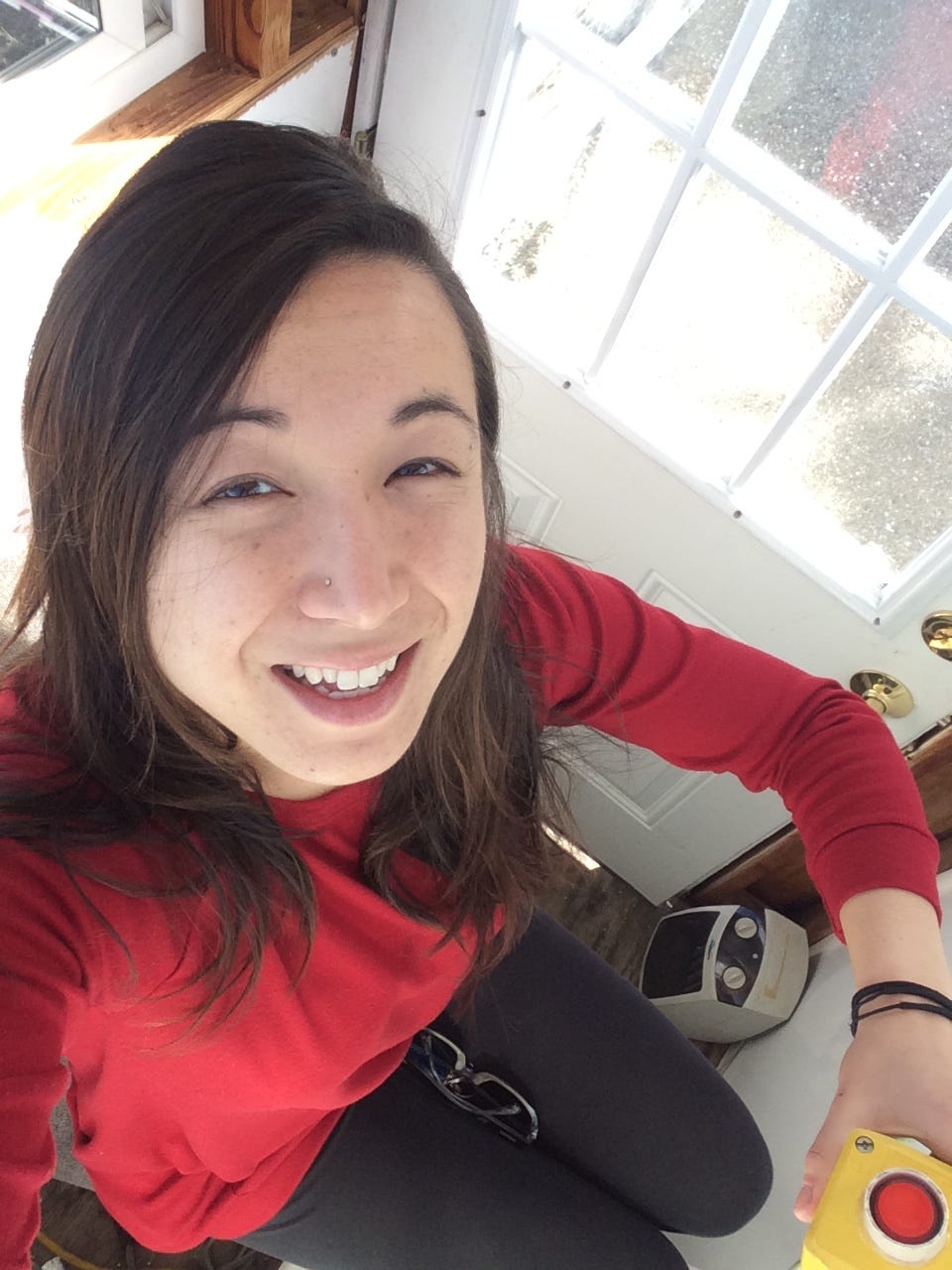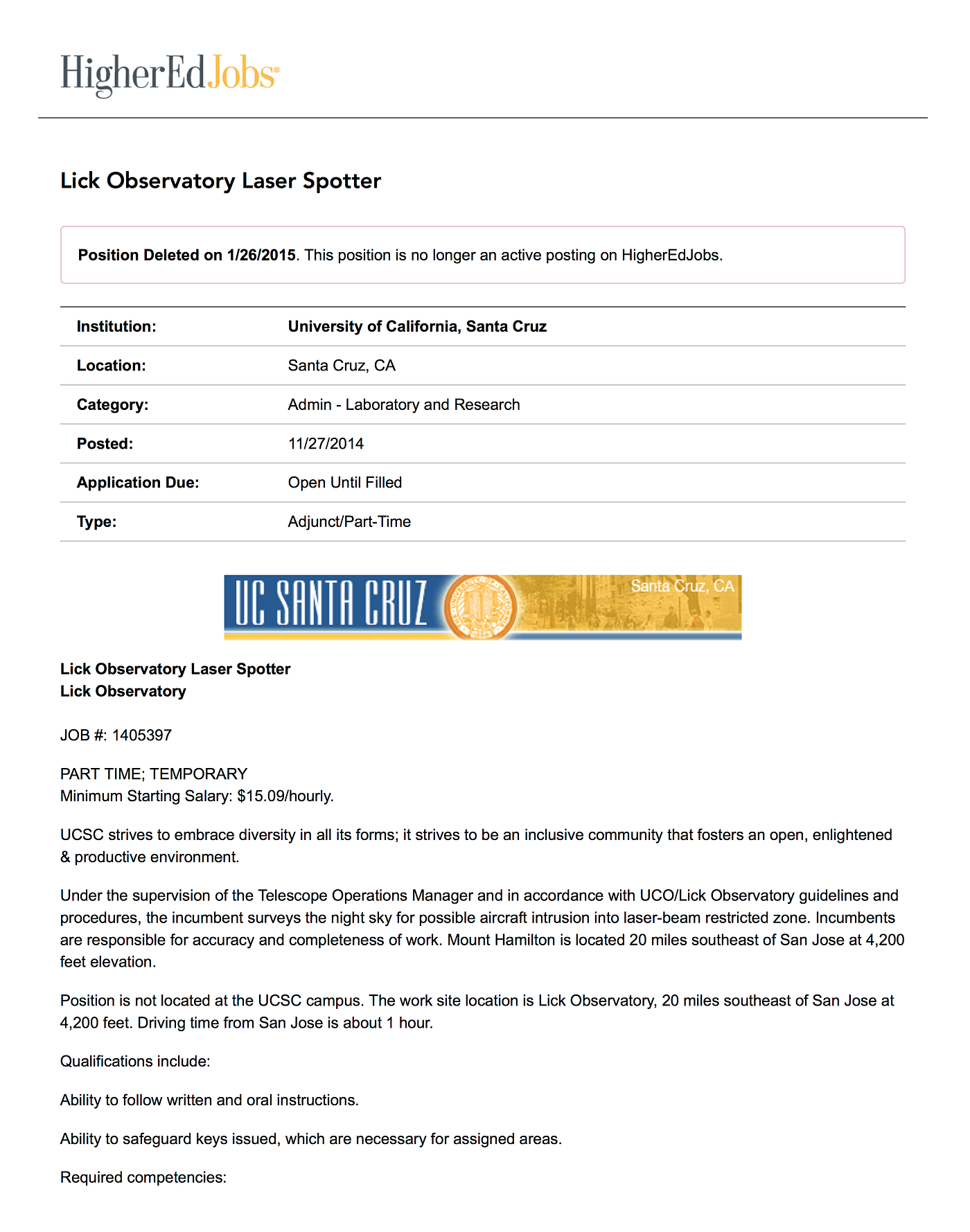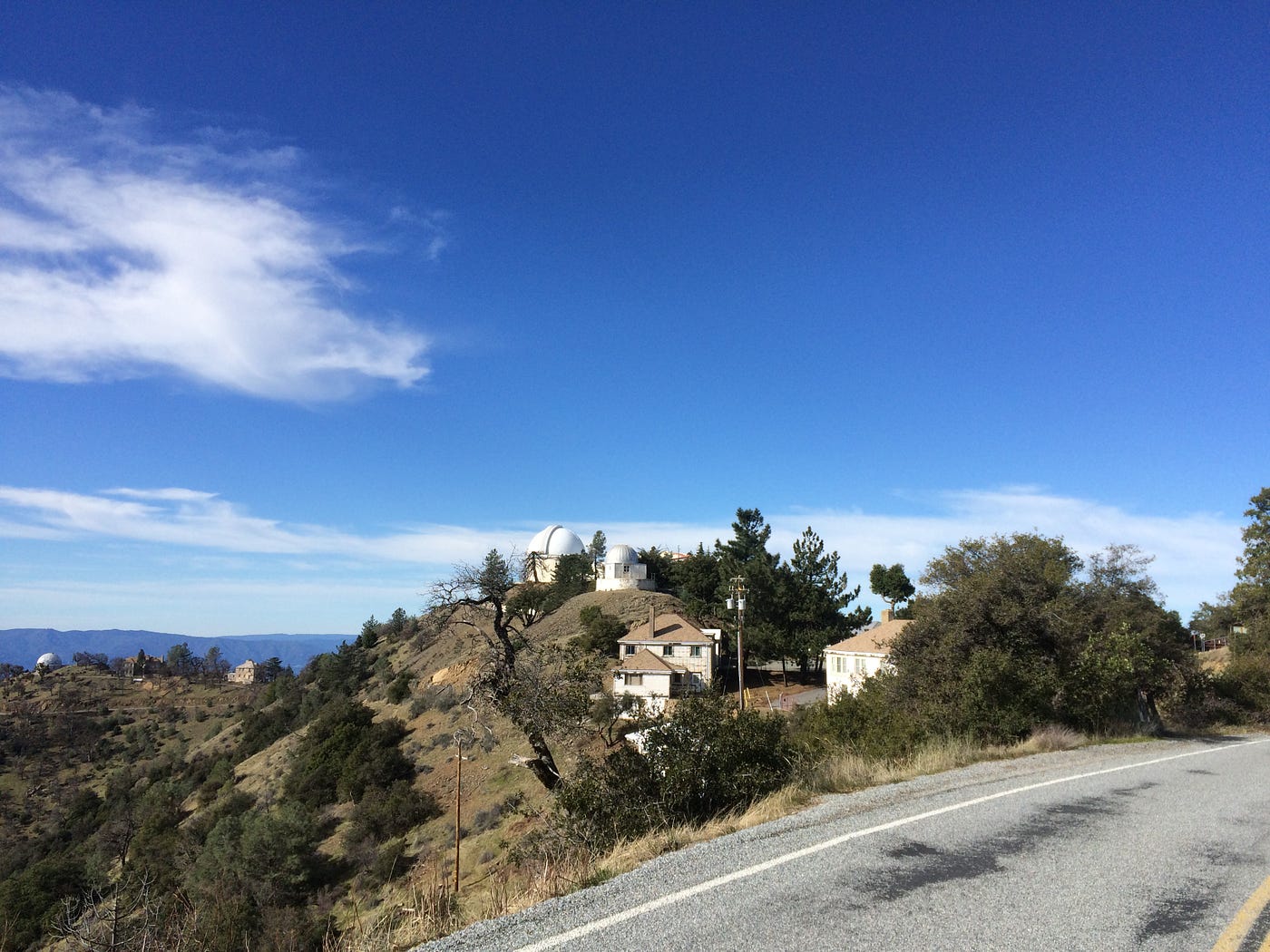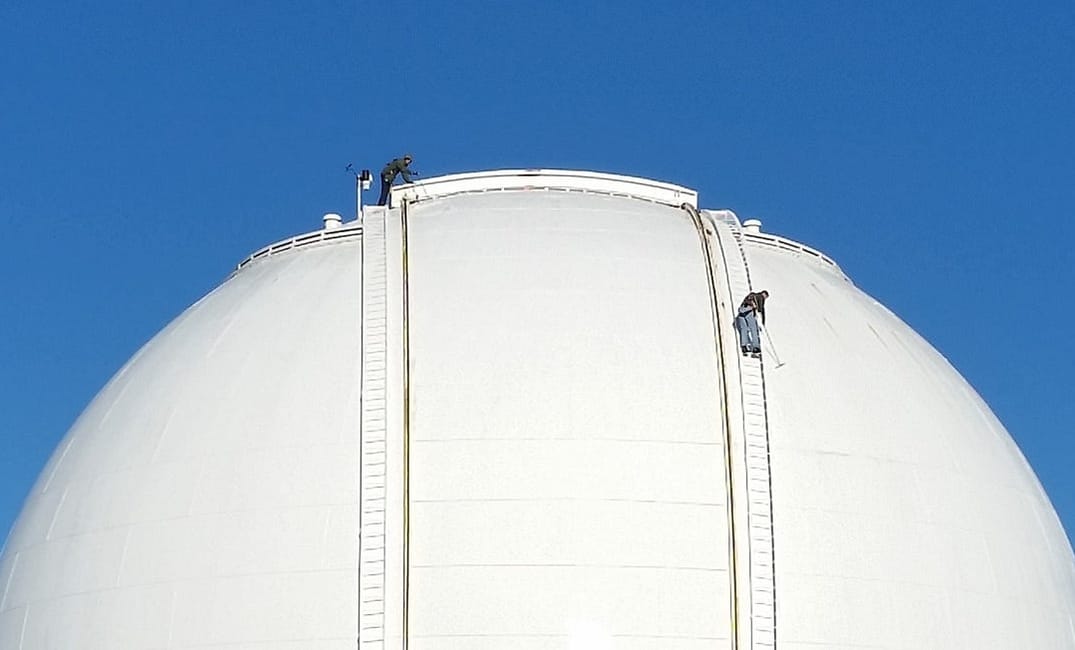
“I basically get paid to stargaze and do sleepovers at Lick [Observatory].”
For the past two years, it has been Helen Yamamoto’s job to sit in a small booth atop Mount Hamilton, stare up at the sky and try not to fall asleep. As one of Lick Observatory’s laser spotters (her actual job title), Helen is entrusted with a crucial observatory task: making sure that the observatory’s “guide star”—technical term for a laser beam pointed up at the sky to help the adaptive optics system compensate for atmospheric distortion — does not accidentally hit a pilot’s eye and blind them with science.
Essentially, this means sitting in the dark all night and staring at the sky. “Our primary goal is to ensure that folks don’t fly into the beam,” Helen said. “Although we have software that tells us when [air] traffic — like planes and satellites — are expected to pass overhead, safety requires more direct precautions.”

Naturally, should a plane or satellite fly into the “laser-beam restriction zone,” the laser spotter must smash the bright-red, Looney Tunes–esque kill button and deactivate the laser to prevent any aviation disasters. (You can see the kill switch in Helen’s selfie of her sitting in the laser-spotter booth.)
“I’ve seen some supercool stuff while working there that likely would have been impossible to see from anywhere with more light pollution.”
On paper, it might not seem like a great job. The hours are late: 10:00 p.m. to 5:00 a.m. The conditions are sometimes grueling: workers can’t look at bright screens, like those on phones or computers, as light reduces the sensitivity of one’s eyes to the night sky. And the starting pay isn’t that good: a 2015 job posting listed it at $15.09/hour.
But the actual experience? It can’t be beat.
“I find the quieter moments more peaceful,” said Helen. “I’ve seen some supercool stuff while working there that likely would have been impossible to see from anywhere with more light pollution and atmosphere.” That includes Comet 45P (the “green comet”) and a “spectacular view of the Milky Way during the late-2015 Blood Moon.” “I’d happily do the work for free,” Helen said. “Each shift also comes with a dorm room, so I basically [get] paid to stargaze and do sleepovers at Lick.”
If you’ve ever worked a night shift, you know how hard it can be to get through the night—especially if there are no lights on — yet Helen says she’s never had a problem staying awake. “Coffee definitely helps,” she said. “I like to listen to TED talks and chat with the folks in the telescope operations room (we stay connected over radio), and I think that other spotters tend to enjoy listening to music.”

Each “spotter booth” has its own space heater and the spotter’s choice of a bar stool or folding chair. (For the record, Helen prefers the stool — “it makes covering the 360-degree view a bit easier on my neck,” she says. And because the drive is long, Helen says working several days in a row is preferable. “I’ve lived in San Francisco, a two-hour, relatively dangerous drive from the observatory, the entire time I’ve held the laser-spotter position, so it’s nice to try to work a few nights at a time if I can.”

As a veteran laser spotter, Helen does the work essentially for fun and to support the science. “It’s a ‘bad’ way to try to make a living but a ‘good’ way to support the observatory, which I care and am concerned about,” she said. Her “primary work” for the past few years has been in aerospace, including working on drone technology and the Hubble Telescope’s Cosmic Origins Spectrograph science team. “I’ve professionally worked with telescopes for almost a decade and mostly just enjoy staying connected to astronomy and the associated community through my position at Lick,” she added.

Interested in being a laser spotter? I have some bad news: Helen says that turnover is low, perhaps because the current staff is quite competent. “I’ve been here for two years, and to my knowledge, no one has fallen asleep or missed an object flying into the beam,” she said.
If you enjoyed this piece, you might also like our Weird Jobs series, in which we catalogue delightfully bizarre job openings in the Bay Area.







